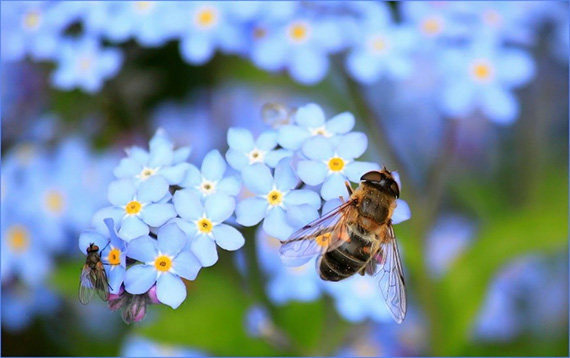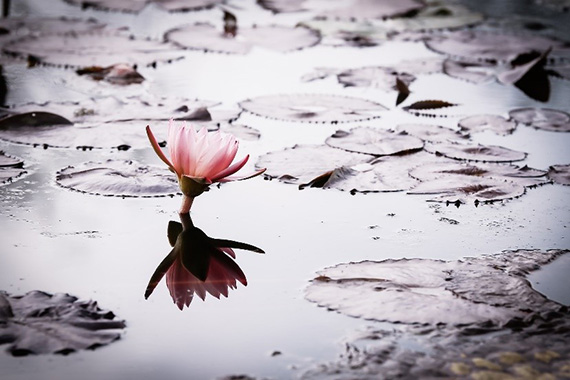Nature photographs are a firm favorite among photographers, both professionals and amateurs. They offer endless possibilities for travel and adventure for the photographer, while evoking memories and fantasies in the minds of viewers.
While a stunning nature photograph looks effortless, many factors, such as the sun, clouds, rain, wind, snow, noise, and animal movements come into play, complicating the process. And worst of all, none of these elements are in your control. But take it from us, that one good photograph makes all the effort worth it. Adding to it, your photograph has the power to help viewers imagine themselves in the wondrous scenery that you’ve captured.
While many elements remain beyond your control, your mindset, skills, and equipment can make the difference between an award-winner and “yet another nature photograph.” Here are six tips and tricks to capture the perfect nature photograph:
1. Develop a thorough understanding of nature
Let’s face it—just because you are on a quest to capture the perfect photograph, Mother Nature is not going to change her ways to make it easy for you. There is no “look up, to the right, smile, hold” in nature photography. You’ve got to work with what’s there. A good understanding of nature will help you see its essence in everyday life. You will be surprised to know that you don’t need to be atop the Alps or deep inside the Amazon to capture your money shot. Simple things like a flock of birds, cloud formation, or a row of trees in contrasting colors in autumn all make worthy subjects. Get in the habit of snapping photos using at least your mobile device every time you are out and about to get familiar with nature. It will also help build your instincts for great photographic material. The more you snap, the more skilled you get. It’s that simple.
2. Consider a range of angles and perspectives
Don’t get used to the habit of standing up straight and capturing photos head-on. That may work for weddings and event photographs, but with nature, you’ve got to play around quite a bit. Here are a few options you can try on your next assignment:
- Crouch or lie down on the ground and take an upward look at your subject
- Capture a photograph from a higher elevation, looking down
- Go as close or far as possible
- Focus on the background rather than the object
3. Be extremely familiar with your equipment
Often nature presents one opportunity to capture that perfect photograph. Miss it, and you will have to wait a long time (or forever) before it happens again. The perfect glint of sunlight on a pond. An eagle soaring down and grabbing its prey in the river.
You never know when that perfect subject will appear, and when it does, you cannot afford to fiddle about with your lenses, camera settings, tripod, auto flash, etc. Follow the Scouts’ motto and be prepared. Even when you’re not out photographing, experiment with your equipment in the backyard as much as you can.
4. Your subject should not be at the center
Although this sounds counter-intuitive, remember a nature photograph taken by a Fuji user does not solely consist of the subject, but every element surrounding it. Placing it ⅓ of distance from the top or bottom is a good rule of thumb to go by. With every nature photograph, you are trying to capture nature in all its glory, as it is. When your subject is off-center it helps draw your viewer’s eye better.
5. Patience is a virtue
Nature bows down to no one. Therefore, practice extreme amounts of patience so that you will be ready when that desired outcome occurs. Just because you’re on a strict schedule doesn’t mean your subject will align itself accordingly. Most stunning nature photographs you see are the result of the photographer spending hours or even days, rain or shine, in one place, waiting for that perfect moment.
6. It’s a numbers game
Forget the quality over quantity mantra. Try to capture as many photographs as possible, from different angles, at different times, and different perspectives. Remember, for every award winning photograph you see, there are countless blurry, boring, photographs with poor composition that never make it to magazine covers or exhibitions. The chances of you snapping that one perfect shot at a given time are almost down to zero. Thus, be prepared to take plenty of photographs. The more you snap, the higher the chances of you landing your money shot.
The above tips and tricks can help you make the best of what you’ve got, and reiterate the fact that, with nature, you only control yourself and your equipment. Mother Nature will go on, and you need to be present and ready to capture that perfect photograph.
What tips have you used to capture amazing nature photographs?
About the Author:
Dominik Krawczyk is a professional photographer born in Vienna, Austria. Dominik loves to ride his Russian sidecar motorcycle with his dog. He also likes to fly his radio-controlled aircraft, and he periodically travels the world to capture its beauty. He is sharing his experiences, adventures, and his findings in his blog Fujiuser.com. Before devoting his work fulltime to photography, he studied computer science at Vienna University of Technology and proceeded to work in the semiconductor industry, developing custom robotic solutions for wafer processing. Passionate about photography, founding a company specialized in drone technology was a natural fit. With his small team he developed photo-based survey solutions for drones. With encouragement from his friends, Dominik deepened his knowledge in art and started to create artistic photos. Today he delights his clients with his outstanding event photography skills using cameras from Fujifilm.
Like This Article?
Don't Miss The Next One!
Join over 100,000 photographers of all experience levels who receive our free photography tips and articles to stay current:








A very nice article and all good points! For me though number 5 (i.e. patience) is always the hard one. Waiting for the right moment is sooo hard!